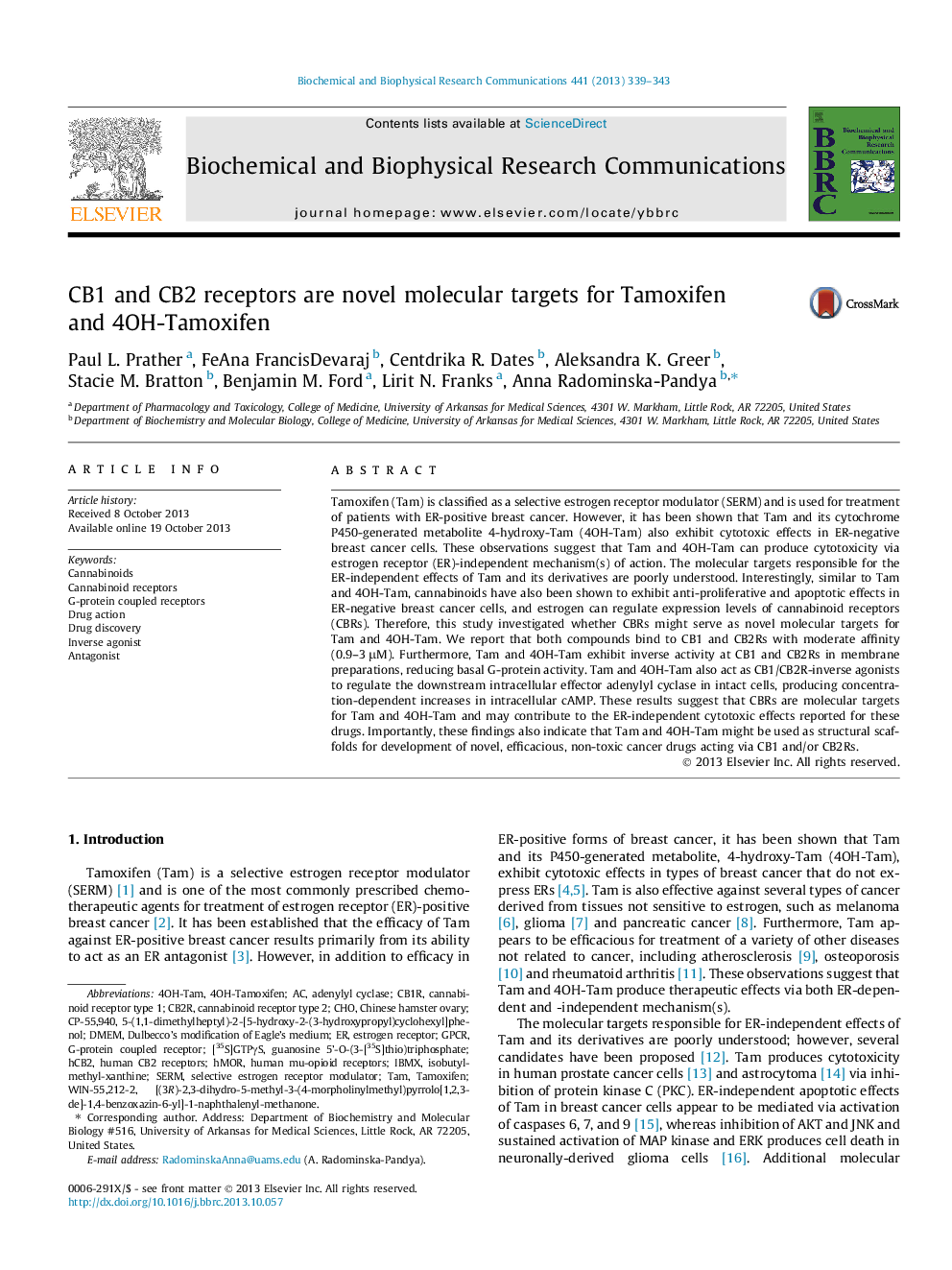| Article ID | Journal | Published Year | Pages | File Type |
|---|---|---|---|---|
| 10757204 | Biochemical and Biophysical Research Communications | 2013 | 5 Pages |
Abstract
Tamoxifen (Tam) is classified as a selective estrogen receptor modulator (SERM) and is used for treatment of patients with ER-positive breast cancer. However, it has been shown that Tam and its cytochrome P450-generated metabolite 4-hydroxy-Tam (4OH-Tam) also exhibit cytotoxic effects in ER-negative breast cancer cells. These observations suggest that Tam and 4OH-Tam can produce cytotoxicity via estrogen receptor (ER)-independent mechanism(s) of action. The molecular targets responsible for the ER-independent effects of Tam and its derivatives are poorly understood. Interestingly, similar to Tam and 4OH-Tam, cannabinoids have also been shown to exhibit anti-proliferative and apoptotic effects in ER-negative breast cancer cells, and estrogen can regulate expression levels of cannabinoid receptors (CBRs). Therefore, this study investigated whether CBRs might serve as novel molecular targets for Tam and 4OH-Tam. We report that both compounds bind to CB1 and CB2Rs with moderate affinity (0.9-3 μM). Furthermore, Tam and 4OH-Tam exhibit inverse activity at CB1 and CB2Rs in membrane preparations, reducing basal G-protein activity. Tam and 4OH-Tam also act as CB1/CB2R-inverse agonists to regulate the downstream intracellular effector adenylyl cyclase in intact cells, producing concentration-dependent increases in intracellular cAMP. These results suggest that CBRs are molecular targets for Tam and 4OH-Tam and may contribute to the ER-independent cytotoxic effects reported for these drugs. Importantly, these findings also indicate that Tam and 4OH-Tam might be used as structural scaffolds for development of novel, efficacious, non-toxic cancer drugs acting via CB1 and/or CB2Rs.
Keywords
IBMXDulbecco’s Modification of Eagle’s MediumWIN-55,212-2HMoRCP-55,940SERMCB2RCB1RGPCRDMEMG-protein coupled receptorG-protein coupled receptors[35S]GTPγSadenylyl cyclaseAntagonistInverse agonistDrug actionChoTAMtamoxifenChinese Hamster OvarySelective estrogen receptor modulatorcannabinoid receptor type 1CannabinoidsDrug discoveryEstrogen receptorcannabinoid receptorscannabinoid receptor type 2
Related Topics
Life Sciences
Biochemistry, Genetics and Molecular Biology
Biochemistry
Authors
Paul L. Prather, FeAna FrancisDevaraj, Centdrika R. Dates, Aleksandra K. Greer, Stacie M. Bratton, Benjamin M. Ford, Lirit N. Franks, Anna Radominska-Pandya,
